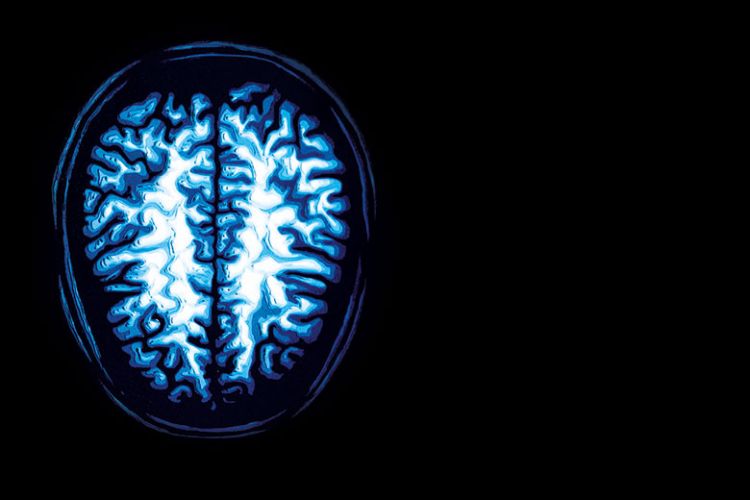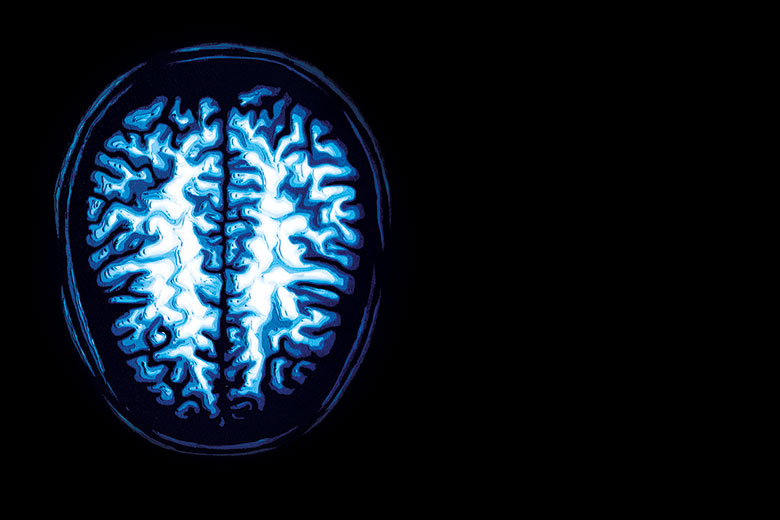Using AI to help lead the fight against brain cancer

PMU researchers are investigating how artificial neural networks can improve detection, diagnosis and treatment at its new artificial intelligence centre
The statistics are stark. The average survival rate for those diagnosed with a malignant brain tumour is just 35 per cent. Of 100 people with glioblastoma multiforme, the most common form of primary malignant brain tumour, only five will survive for more than five years.
Brain tumours are one of the deadliest forms of cancer. In the US, an estimated 700,000 people have a primary brain tumour, with more than 86,000 diagnoses expected in 2019. In the UK, brain tumours are the biggest cancer killer of children and adults under 40.
With such a serious disease, accurate diagnosis is essential to ensure patients get treatment as early as possible; however, human errors occur during diagnosis.
At Prince Mohammad Bin Fahd University, researchers are investigating how AI can be harnessed to improve cancer diagnoses, and therefore lead to early treatment. Medical applications of AI will be a key focus of PMU’s new, state-of-the-art artificial intelligence centre. Equipped with cutting-edge technology and machinery, it is expected to be the only one of its kind in Saudi Arabia’s Eastern Province and surrounding areas.
Tuan D. Pham, specialist in use of AI in medical applications, recruited as the centre’s director. Professor Pham has a strong research record in using artificial neural networks in AI medical research and is a well-known figure in the field of AI image processing. As director of the newly established AI centre, he will be recruiting many specialised researchers in all areas of AI.
“Diagnosis of medical conditions is usually done by humans – doctors along with specialists in medical imaging. It’s a time-consuming and very costly process,” says Jaafar Alghazo, assistant professor in computer engineering at PMU’s College of Computer Engineering and Science.
“If someday we can have this process purely done by computers, we will see advantages,” he says. “It will help in early detection. Right now, a person is often diagnosed with cancer only if they become really sick and have an MRI scan. Diagnosing the MRI images is a lengthy and expensive process, so it’s not done for everybody.”
With computer-aided diagnosis, MRI images could be automatically analysed, enabling early detection that may save lives. PMU AI research groups have already published more than 30 research papers in the use of ANN for medical diagnosis and other applications.
Dr Alghazo says that the AI method relies on teaching an algorithm how to detect cancer based on other examples of cancer imaging through different methods one of which is deep learning. “We use huge databases exceeding 300,000 images to teach the ANN what a cancer looks like and how to find it,” he says. “Based on the algorithms, and the images that it learns, it will be able to diagnose from new images.”
PMU’s researchers’ approach focuses on segmentation, classification and recognition. Segmentation teaches algorithms to identify and the cancerous portion of the image to extract it from the whole image.
Classification is the process of differentiating between types of brain cancer, while recognition is recognising the problematic area and diagnosing it based on segmentation and classification.
Results have been impressive. “One of the CCES researchers, Ghazanfar Latif, concentrates on diagnosing brain glioma cancer using enhanced deep learning algorithms. Recognition rates are close to 99 per cent,” says Dr Alghazo. “In addition to glioma brain cancer, Dr Latif also used AI algorithms to examine skin cancer and eye condition recognition.” Professor Pham’s research has investigated how deep learning can be harnessed to detect and diagnose Parkinson’s disease.
The research group is also working on potential medical solutions based on the Internet of Things – where everyday objects are internet-enabled. “Household items could monitor patients and use AI algorithms to predict when a problem is going to occur, before it occurs,” says Dr Alghazo.
By looking at thousands of patients who suffer a heart attack, for example, researchers could find a message that leads to the creation of an AI algorithm to predict heart attacks. The IoT household item could connect to emergency services and call an ambulance before the heart attack occurs. Such devices offer a huge cost-saving opportunity, as patients could be monitored at home, rather than in hospitals.
“The use of AI in the medical field, particularly for diagnosis, is being conducted by many research groups worldwide. The advancement in this area is moving extremely fast and will eventually transform the field of medical diagnosis,” says Dr Alghazo. “Automatic medical diagnosis would have a global impact and especially benefits patients.”
Medical-related solutions are only one of the areas the PMU’s AI centre will focus on. Researchers will also investigate AI breakthroughs in natural language processing, smart cities, virtual reality and robotics. PMU’s Robotics Lab will be the research and training hub in the Eastern Province.
Some of Saudi Arabia’s largest energy companies, such as Saudi Aramco and Sabic, are located in the Eastern Province in close proximity to PMU. “We believe the industry will partner with PMU’s AI centre and be an integral part of the project,” says Dr Alghazo.
The research the centre undertakes will be conducted with tangible, real-world benefits in mind, not least the prospect of saving lives.
In addition, PMU is now designing bachelor’s and master’s programmes in AI and may partner with international universities in offering these degrees.
More information about Prince Mohammad Bin Fahd University
